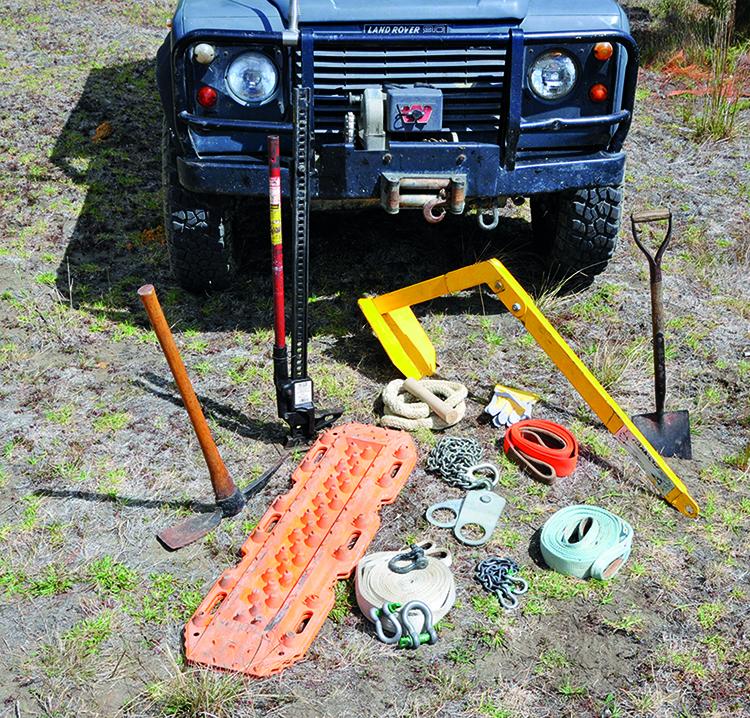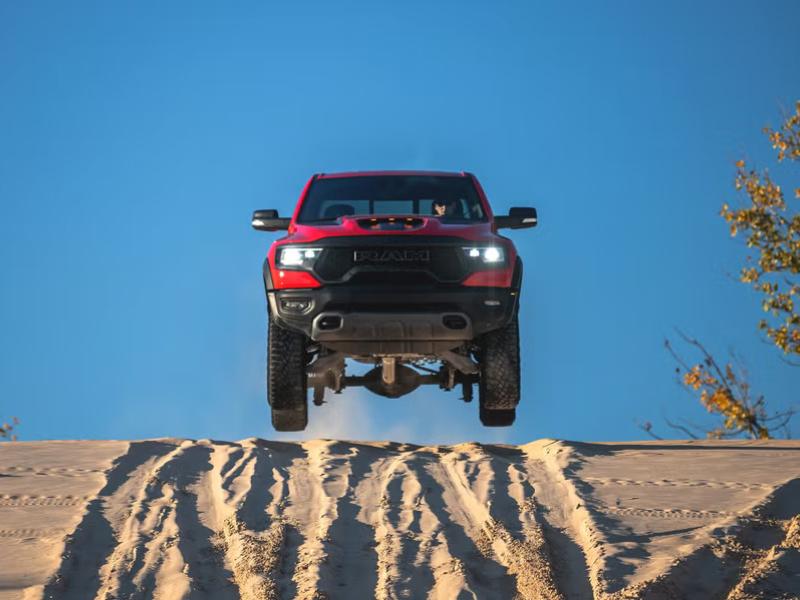If you are going to drive off-road, it is inevitable you will eventually become stuck; a fact you can count on.
While it has been said before that you should never venture off on your own, we are a nation of explorers and do just that at times. When we do, it is important to ensure you have some way of becoming unstuck, especially if on your own. The minimum of recovery gear would include: a shovel or spade, an axe or bow saw, a hi-lift jack, recovery-rated shackles, chain and/or wire rope, a snatch or pulley block, a tree strop and a stretch or kinetic rope. Never leave home without at least a spade.
So before we set off we need to have some basic recovery gear and knowledge on how to use it. Let’s start with the first item, a spade. A decent spade is a priority and you will note it is nearly always the first item on any list of recovery items. It needs to be heavy duty with a sharp blade. Those small fold-up ones are definitely not up to the task. Often, a few minutes with the spade will get a stuck 4WD on its way. If the ruts are too deep, dig the centre off and fill them in. If the 4WD is bellied in a rut, dig out the centre and reverse out.
While a shovel will suffice, the squarer shape of the spade makes it easier to dig a leading track for the wheels to climb out of deep ruts.
High-lift jack – a multi-purpose jack, effective but heavy and awkward to carry. With the right accessories it can be pressed into service as a hand winch.
Use of the high-lift as a jack is only possible if you have bumpers or side sills strong enough to take the vehicle’s weight or have an attachment such as Hi-Lift’s ‘Lift Mate’ that allows you to lift from the wheel, including alloys.
If you are stuck in deep ruts you can lift the vehicle up high, and then push it over out of the ruts onto more suitable ground. This technique can be dangerous and needs the wheels to be chocked and may need the vehicle to be steadied while getting it to the height for the push. When you ‘pole vault’ the vehicle, ensure everyone is standing well back and clear of the jack.
The other option is to jack up the vehicle and place stones or brush under the wheels to build up the clearance and give the tyres something to grip on.
Another use for the high-lift jack is as a hand winch. Best used with a snig chain that has a grab hook to shorten up and allow you to reset after each ‘jack’ or ‘winch’ along the shaft. There are high-lift winch kits available from various suppliers or a chain supplier can make a set up for you.
Shackles and snig chain – a selection of various-sized shackles never go amiss, especially if you are going to use the hilift jack as a winch. Bow shackles that are rated, usually 3.25t and 4.75t, cover most situations. One thing about a shackle is that they should never be allowed to have the load applied on the sides, but directly in line on the pin and the ‘bow’. A rated snig chain is best if using a high lift jack as a winch. With grab hooks either end that hook back onto the chain you can adjust the chain to the required length.
A tree protector is required to attach a winch cable to a tree or other anchor point, even when using the high lift jack as a winch. Never wrap the winch rope around the anchor point and back onto itself. This will weaken and damage the winch rope, whether synthetic or wire.
You should always have a nylon snatch rope/strap, even if on your own, as someone may just chance upon your predicament and be able to offer a tow. It should be a proper kinetic rope or strap made of nylon. Only a nylon snatch strap has the ability to stretch and use the kinetic energy to assist with a recovery. Polyester or polypropylene straps do not stretch. Learn the correct procedures for use and care of nylon recovery straps before you venture out. Using the proper technique, a little Suzuki can successfully recovery a stuck Nissan or Toyota.
Other items to consider are a pruning saw and/or axe to trim vegetation off the track or to cut small trees clear so you can pass. A good quality bottle jack along with a suitable base board is very useful for getting yourself out of trouble, especially if you don’t have a hilift jack.
Finally while not strictly recovery equipment, a good heavy duty pair of pigskin gloves should always be part of any recovery kit.
Torque talk BY Ashley Lucas







